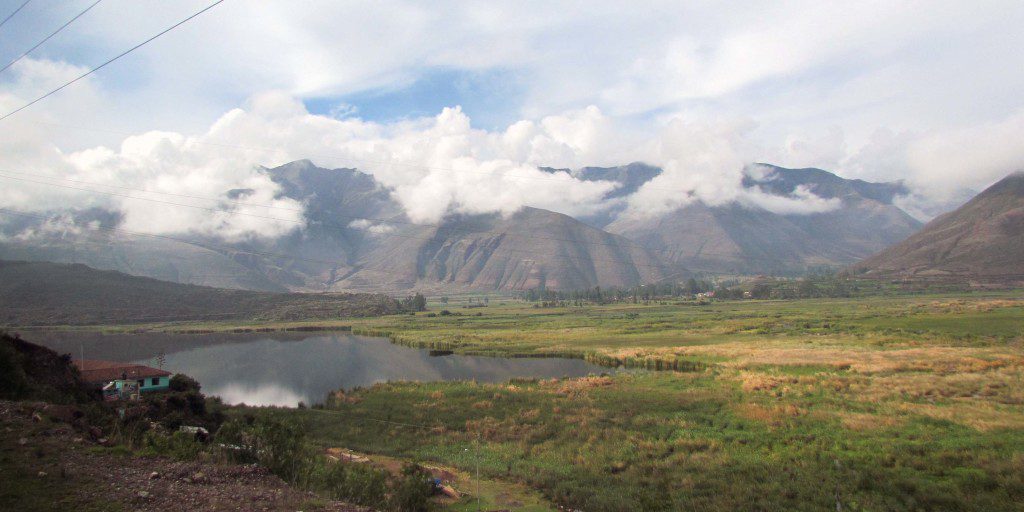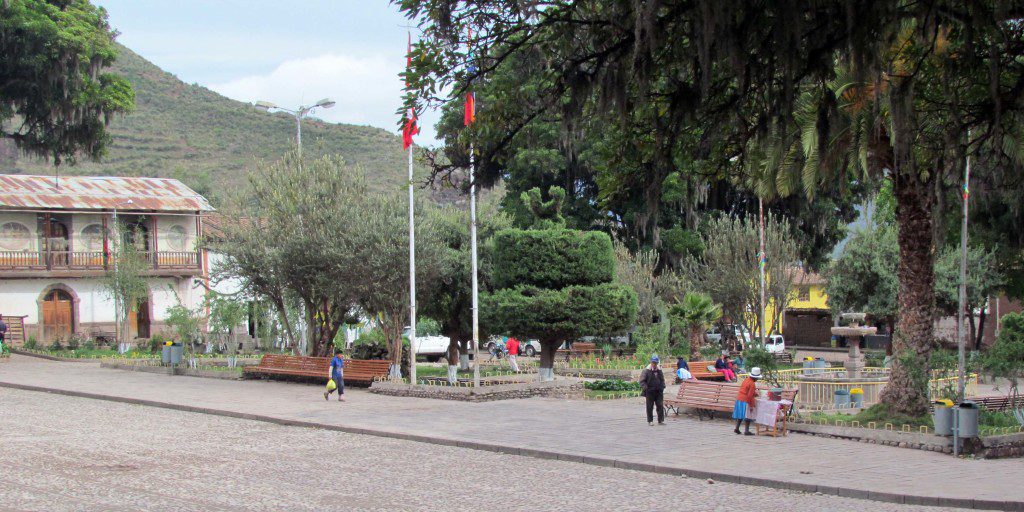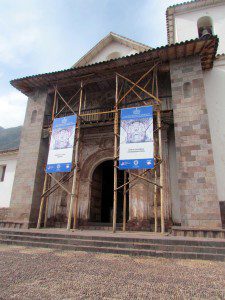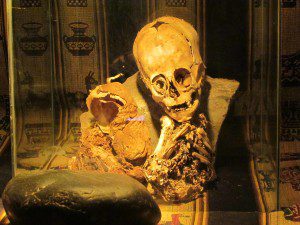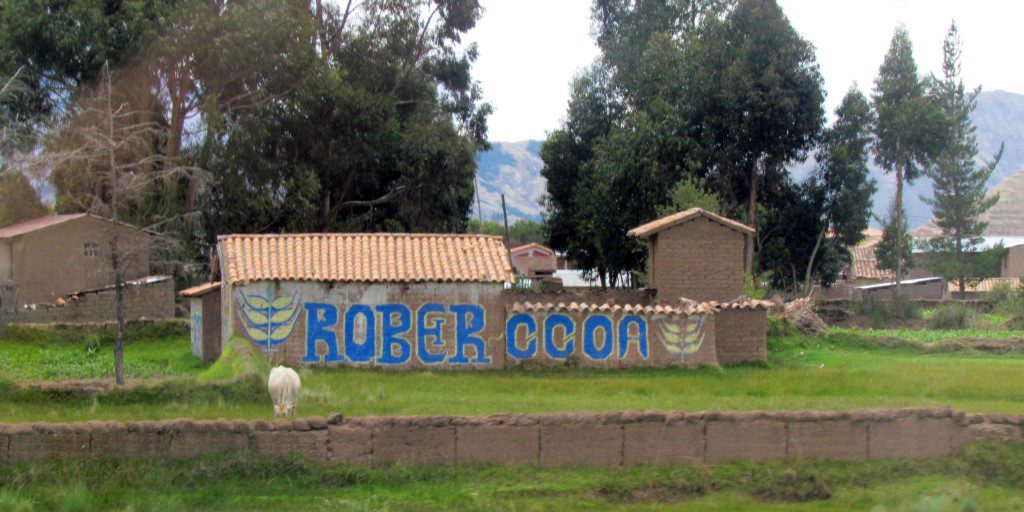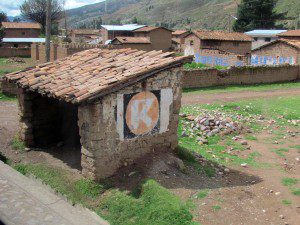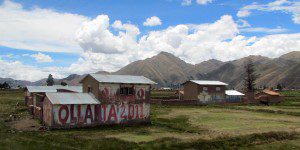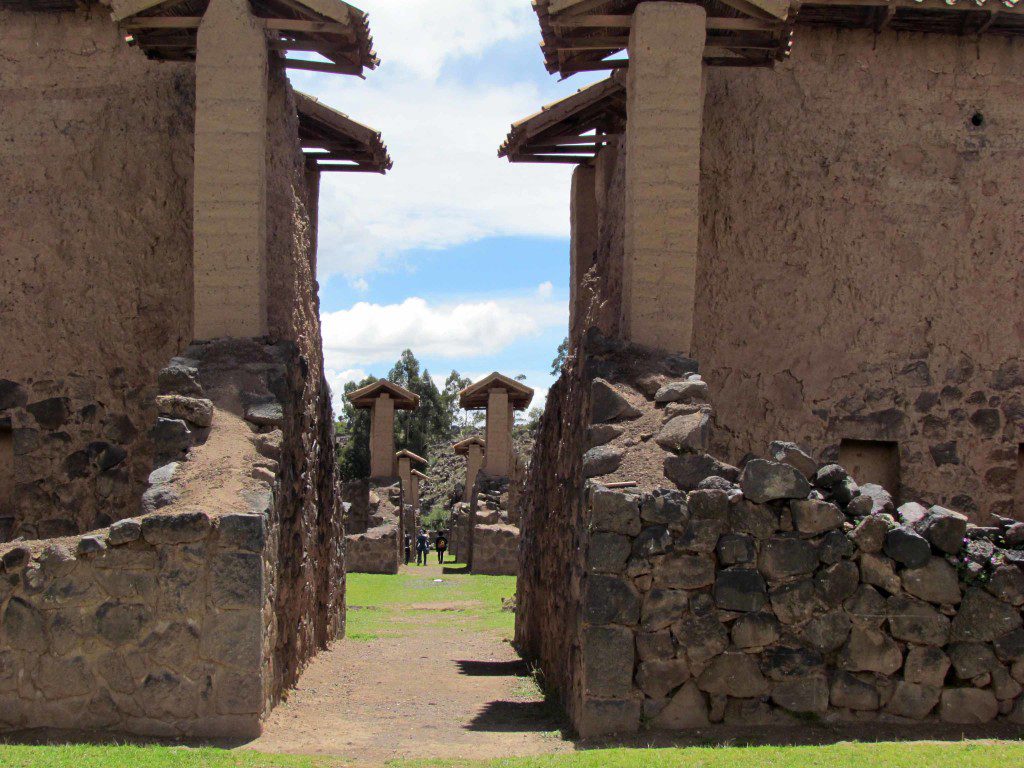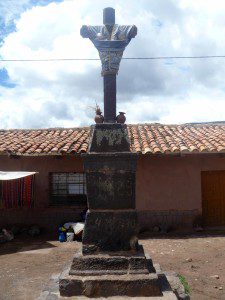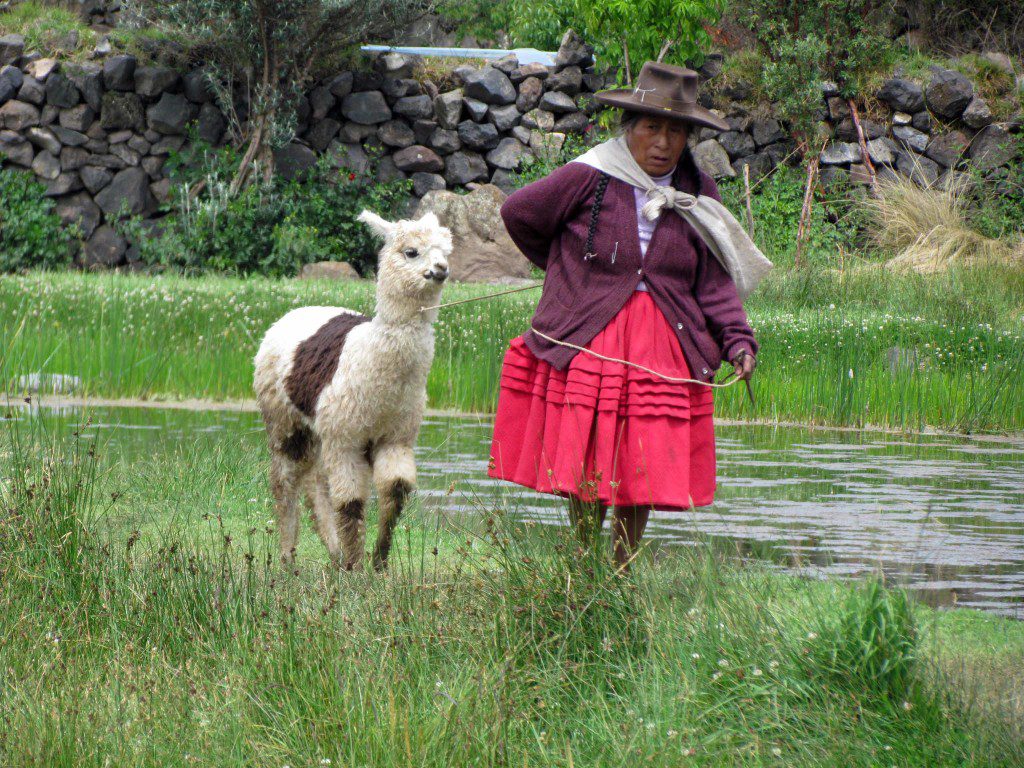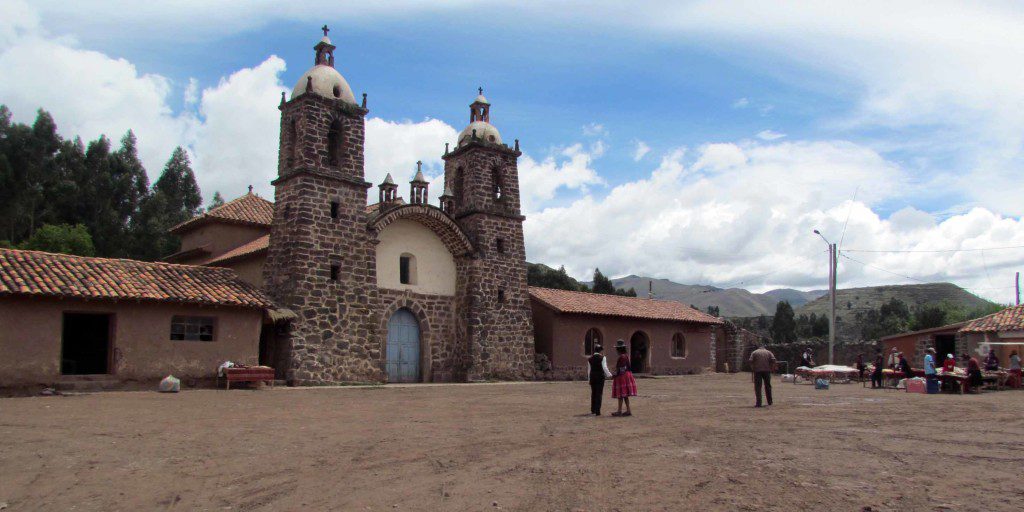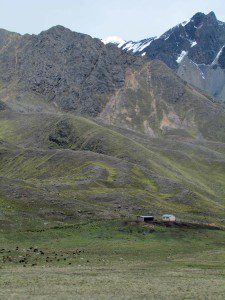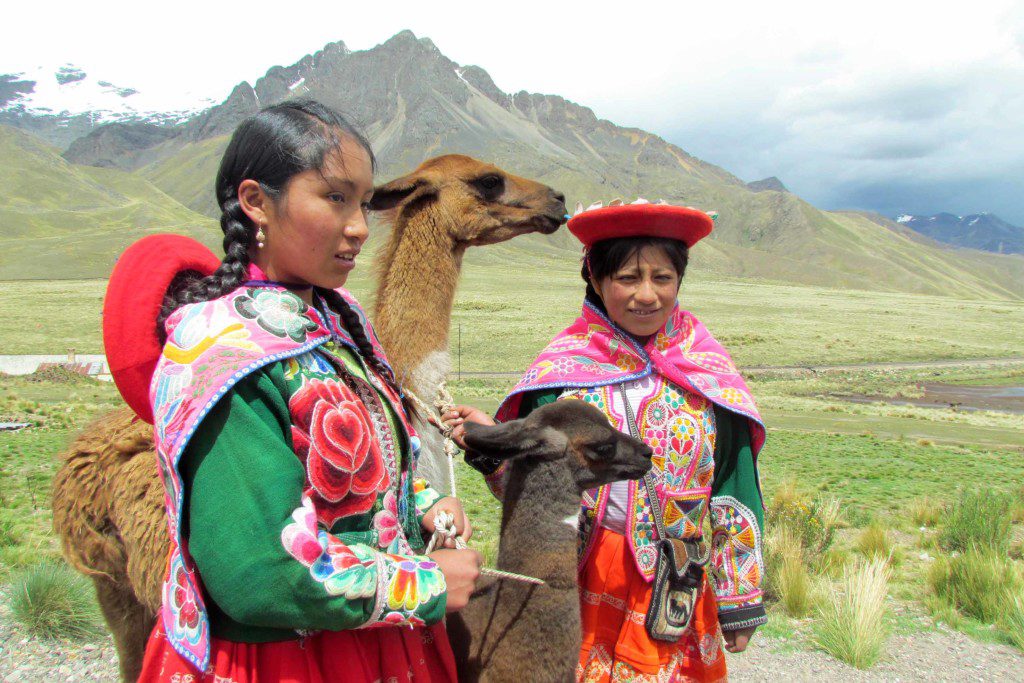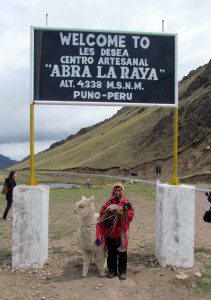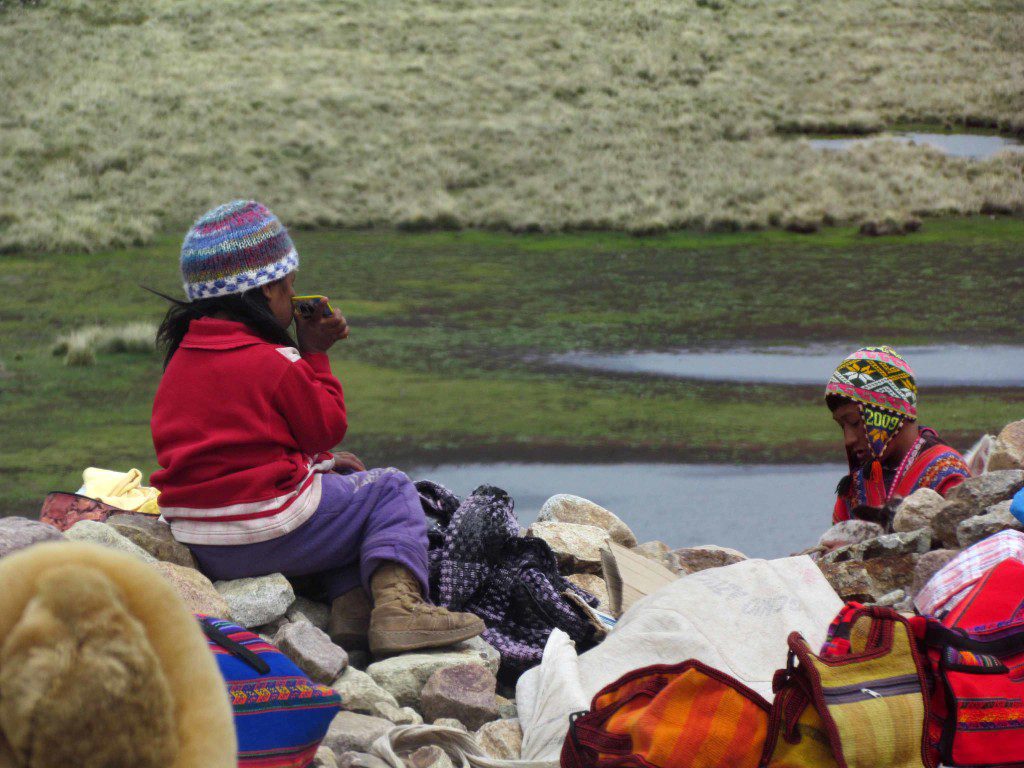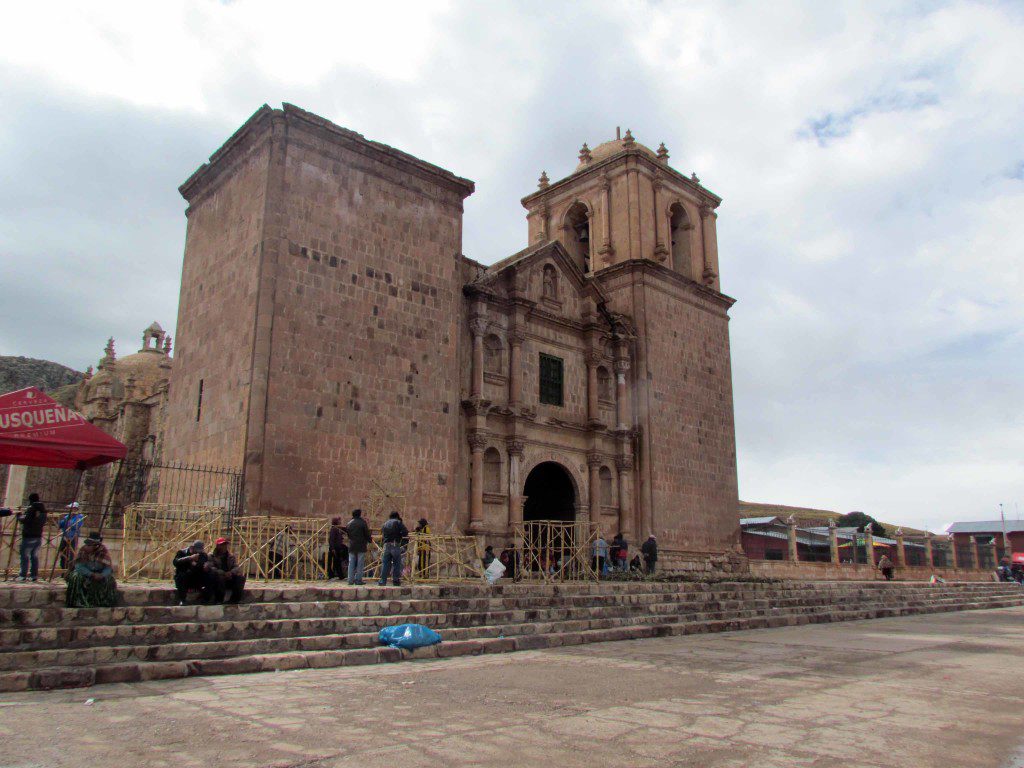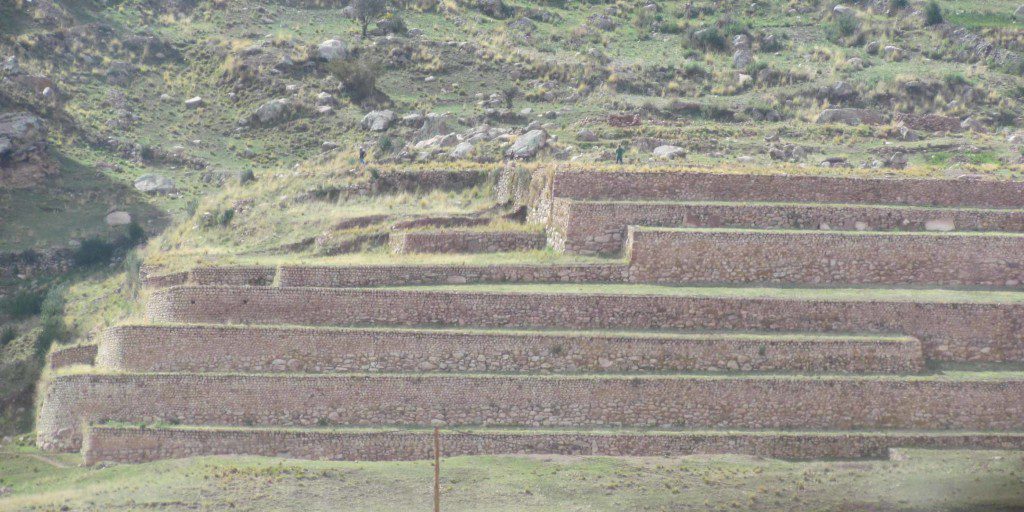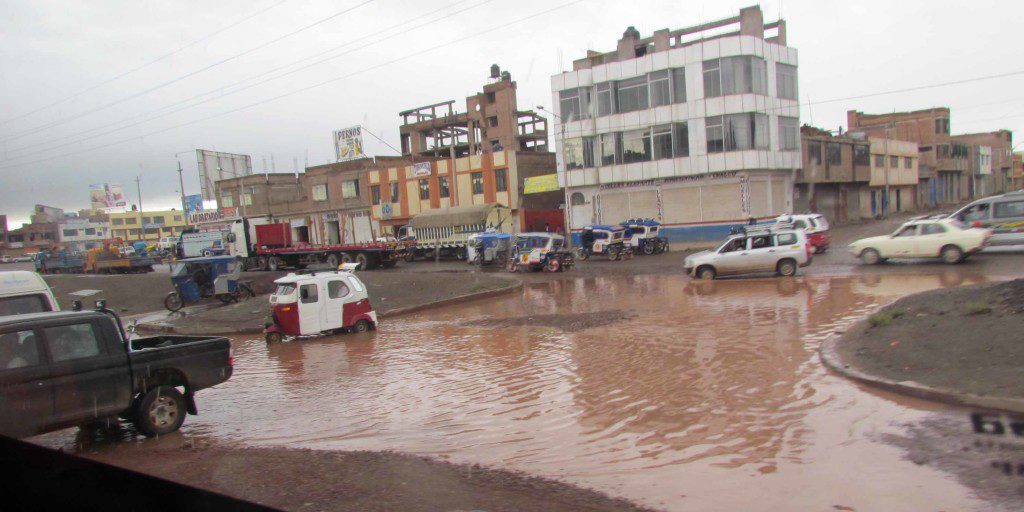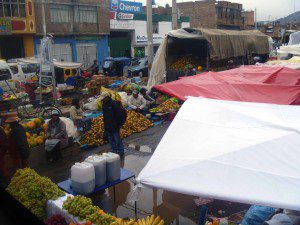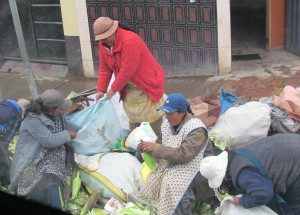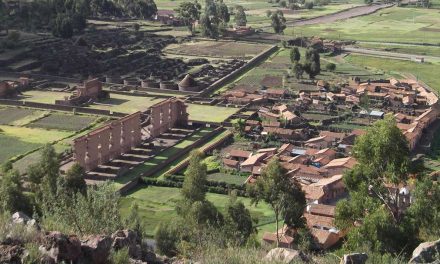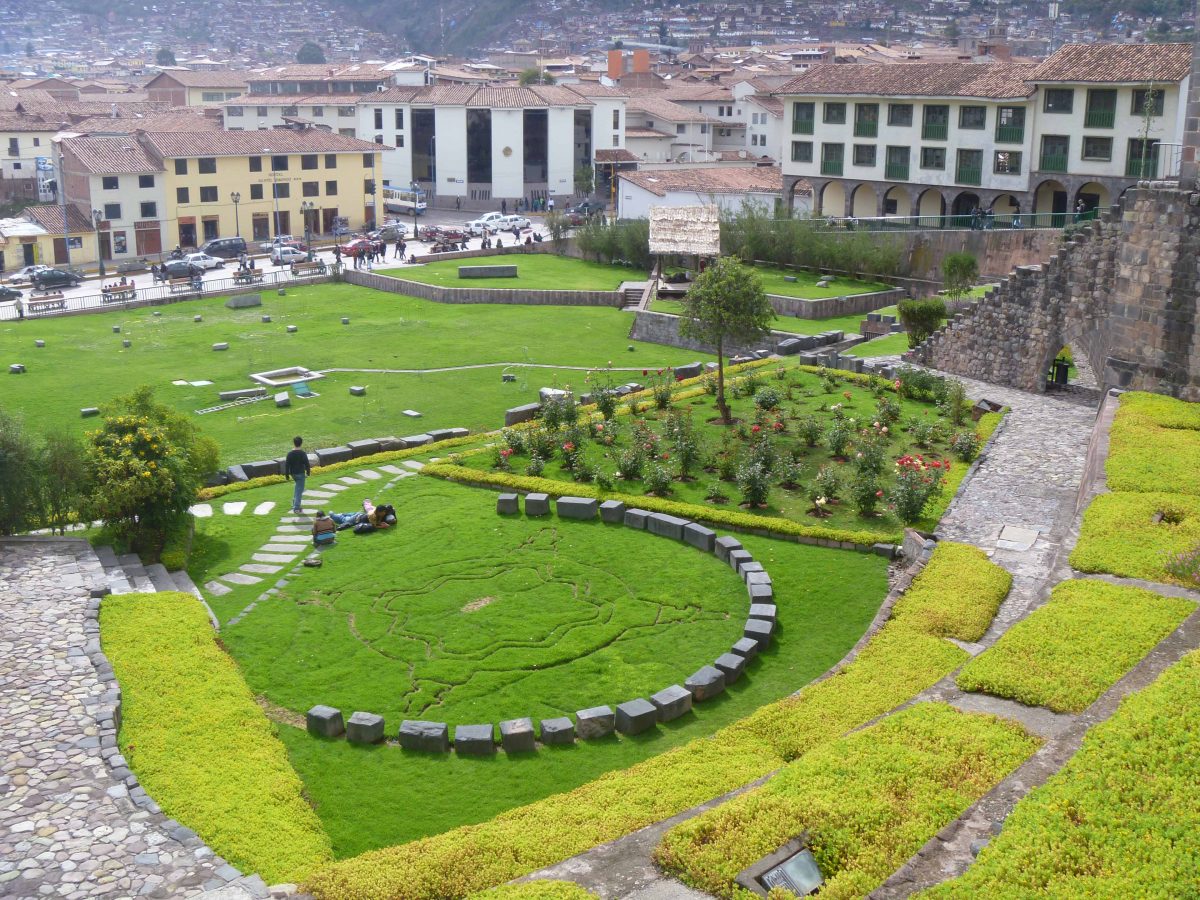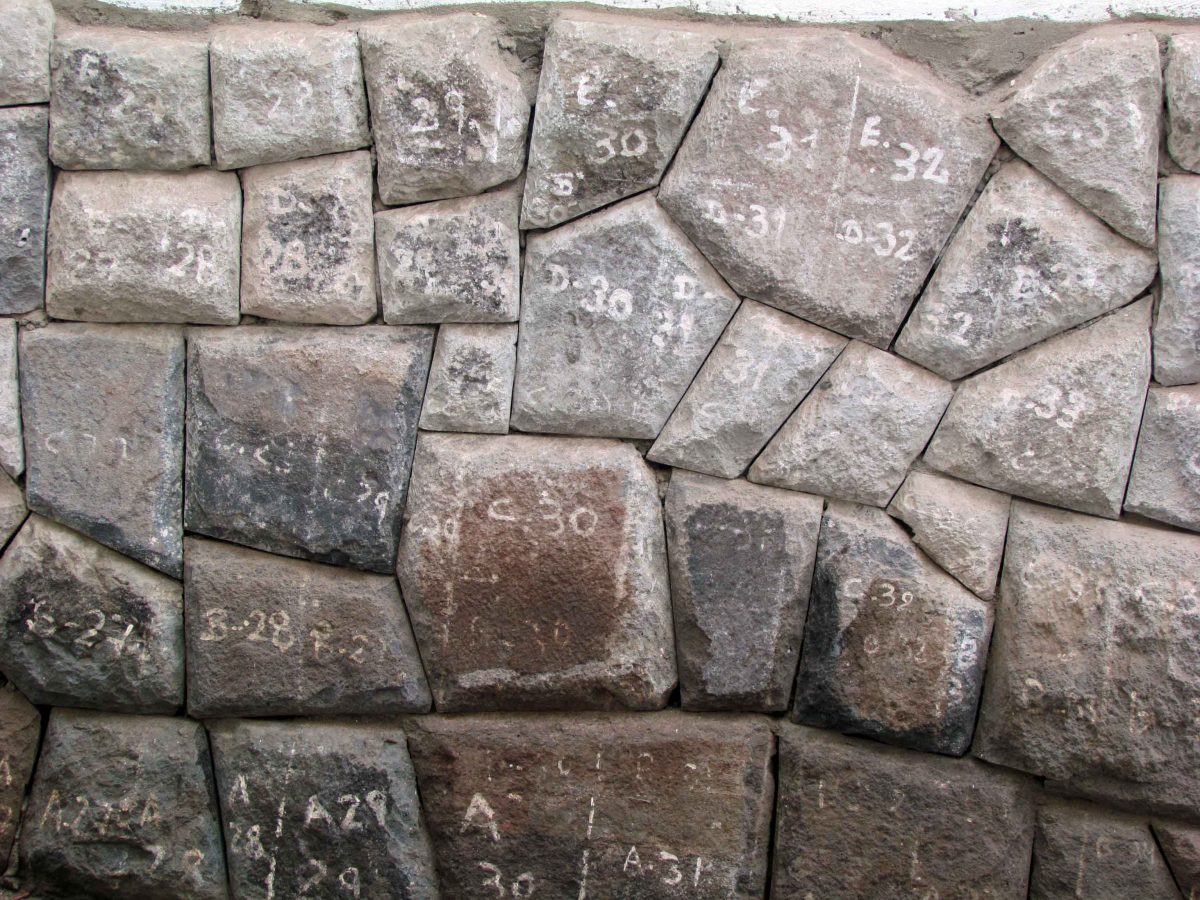As responsible travelers evolve, so do the stories we share.
This article is part of our living archive — trusted content we continue to care for.
First published on December 31, 2014 • Last updated on February 7, 2018.
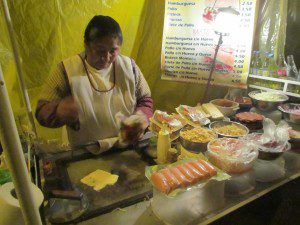 It has been almost a year since my husband and I gifted our family the trip of a lifetime. Because of his military assignment to Buenos Aires, Argentina, we found ourselves closer to Peru and Bolivia than we thought we would ever live again. We used the opportunity to travel. Last Christmas found us on a two week trip, about half of which I have already written about.
It has been almost a year since my husband and I gifted our family the trip of a lifetime. Because of his military assignment to Buenos Aires, Argentina, we found ourselves closer to Peru and Bolivia than we thought we would ever live again. We used the opportunity to travel. Last Christmas found us on a two week trip, about half of which I have already written about.
I find myself reminiscing a lot about December of last year. It was Christmas Eve when we woke early in the morning to catch our bus for Puno, Peru – a city on the shores of Lake Titicaca. We had just finished our 4 day trip on the Camino del Inca the night before. In fact, we had arrived at the hotel in Cusco so late, we didn’t eat dinner until almost midnight. A grandmotherly Peruana made chicken and egg sandwiches to order from her simple street stand. We each waited in turn since she could only make one sandwich at a time. They were well worth the wait! I highly recommend Peruvian street food!
We weren’t necessarily in top form when we woke up early the next morning to catch the bus. We were tired and sore from our four day hike; we were culturally saturated by Incan ruins and the glory of Machu Picchu; two of us had recently recovered from altitude sickness but still weren’t 100%. Little did we know that we had more in store for us… but don’t let me get ahead of myself.
The nice thing about a bus trip is that we could sit and see the countryside and not have to walk very much. The bad thing is that we didn’t get to chose where to stop nor when. We visited some of the most touristy destinations possible during our long day but managed to experience some of the true culture of Peru despite the buffet lunch, the folks waiting in costume with their llamas and sheep, and the trinket vendors.
Our first stop of the day was not too far down the road – the Andahuaylillas Church. It’s a small church in a quiet town on the edge of a huge plaza. I imagine that during festival time, the place would be crowded with locals as well as vendors for the tourists. But this morning it was peaceful and quiet and our lone tour bus put a smile on the few vendors’ faces.
This church is stunning inside despite years of neglect. The locals do not receive funds from the Catholic Church to help with upkeep. In fact, The World Monuments Fund is attempting to raise money to fix roof leaks, structural damage from earthquakes, and prevent any more erosion of the gorgeous 17th century murals, all painted by a local artist in natural colors. We were not allowed to take photos but you can see a slideshow here.
The church wasn’t the only attraction. Next door we visited a small museum full of odds and ends. Since the church had been built on an old Inca site, the area is ripe with artifacts, including the famous Andahuaylillas Skull. There are multiple debates about the origins of deformed skulls. Some people actually believe that one specific skull found near this town is not even human in origin but is alien. Yes, extraterrestrial.
It is far more likely that the skull is an example of the practice of wrapping the head at a very young age to force the bones to move while they are still malleable. I’ll let you read more about it at wikipedia rather than get into any arguments here. My family and I found ourselves far more interested in other local artifacts.
After a quick run around the plaza to see the vendors, we boarded the bus and continued on our trip. From the large windows, we were able to see so much of the Peruvian countryside. At first, the landscape was a mixture of green farmland and more scrubby cactus with an occasional body of water. We saw a wide variety of homes but most were built from red brick adobe with red tile roofs. One settlement had garbage piled up and teeming into the nearby stream but most communities seemed tidy and neat, walls separating planted beds from animal pasture. Every community had at least one building with a political sign painted on its side.

Our next stop was a small town along the highway. Called Raqchi by some, the Temple of Wiracocha by others, it is the site of an ancient Incan Temple. The old ruins are surrounded by farm land, and animals grazed in the fields while woman hauled corn or walked animals. Corn has been important for centuries to Peru and the ancient Inca site included qolqas, or stone grain silos. These were almost as interesting as the main attraction, the huge structure that would have once held a roof and allowed for a place of worship for the pilgrims that came to visit. The structure itself is 12 meters high and is built from dressed stone, a process used only for the most important buildings in the Inca Empire. The site is also famous for five fountains. Water is extremely important to the modern day Quechua people as it was to the Inca and earlier cultures living in this Sacred Valley before them.
Tourism is almost as important as water to this town. I’m sure the many buses bring much needed money to the area. We were met by a local tour guide and given a bright, colorful guidebook in both Spanish and English. Locals were very willing to pose for pictures for a small donation, a practice that I still struggle with almost a year later. At this point in our trip, I was embracing my inner tourist but my desire to document ‘real’ life was definitely in question. It didn’t stop me, however, from having conversations with each person I encountered. 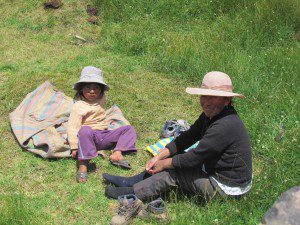 Sometimes, my Spanish was not enough for many locals spoke more Quechua than anything else. But I still managed my best conversation of the entire trip. It took place over an old farm wall with a young woman and her even younger daughter as they were pausing from their labors, shoes off and enjoying the warm, sunny day. She spoke with incredible pride of living in the place of her grandparents. She wanted me to know that caring for the land was of utmost importance which was part of the reason that the President gave the land back to the people, to the campesinos, she said. Those other people who had owned the land only desecrated the graves of her ancestors for gold. And then her eyes looked back to the temple I had just walked through.
Sometimes, my Spanish was not enough for many locals spoke more Quechua than anything else. But I still managed my best conversation of the entire trip. It took place over an old farm wall with a young woman and her even younger daughter as they were pausing from their labors, shoes off and enjoying the warm, sunny day. She spoke with incredible pride of living in the place of her grandparents. She wanted me to know that caring for the land was of utmost importance which was part of the reason that the President gave the land back to the people, to the campesinos, she said. Those other people who had owned the land only desecrated the graves of her ancestors for gold. And then her eyes looked back to the temple I had just walked through.
I didn’t have a chance to ask her, but I wondered how she felt about the church in the central plaza. There seems to be a battle here between following the ancient ways and accepting the ways of the modern Catholic Church. It is subtle but very clear when you listen – some guides on our trip spoke positively of the Church and of Catholic culture and glossed over the Church’s treatment of the native population. Others guides glorified the Inca culture to the point that you might believe they want to see a return of the Inca themselves. Very few people seemed to have a more realistic view of the two. Of course, my Spanish is less than perfect so some of my assumptions are probably unfair as I miss nuance in many conversations.
Not unsurprisingly, I was one of the last people hustled toward the bus. I didn’t expect to find the same kind of conversation at lunch, our next stop down the road, and I didn’t. Though the food was good, the atmosphere was staged. Imagine your own local Peruvian musicians, ubiquitous in most US cities, and we had a similar crew. We were offered local quinoa dishes and local potatoes but there was enough European food to satisfy the fussiest eaters. We ate quickly and were neatly filed back on the bus to our next destination.
We were gaining in altitude and farm land slowly gave way to more mountainous terrain. We were leaving the Sacred Valley of the Inca. The brick red adobe walls and tile roofs gave way to earthy yellow adobe and thatched roofs. We saw animals everywhere, sheep and cows, oxen and llamas, chickens and pigs galore but no goats. And once, off in the distance I saw a lone bright pink flamingo resting in a high mountain lake.
The high mountains make for stunning views, even from a bus window, but we were all ready to stretch our legs when the bus stopped at the mountain pass of La Raya. We had reached 4,338 meters of altitude – or in a measurement we understand better here in the US, 14,232 feet. To put it simply, we were high. I should have taken this as a warning.
As usual, our bus stop included not only a photo op, but the chance to buy everything Peruvian, from sweaters to knick knacks. And the photo op was for far more than a sign at the top or a great view of the mountain pass. We were greeted by a young man holding a baby alpaca. As I took my turn holding this tiny creature and stroking its soft hair, I spoke to this young man, not much younger than my 13 year old. His name was Darwin. It was always a surprise to hear such European names in Peru and Bolivia but it happened again and again. I wanted to ask if Darwin knew that his name was the same as a famous traveler and naturalist but didn’t. Instead I asked about school and received a less than satisfactory answer. Like many kids in Peru, I’m not sure Darwin goes to school at all; there is more money to be made in photos for tourists than in studying. Once again, I was left to wonder if we were hurting more than we were helping.
Our beautiful blue sky had slowly disappeared until the clouds finally turned into sheets of rain. We were happy to be back on the bus. Fortunately, the clouds pushed back once again just in time for our last stop. We were able to walk up the city streets to the central plaza without getting wet.
Our goal was a local museum full of interesting carved statues, many that pre-date Inca times but I was more interested in the goings on in the central plaza. All day, it had been hard to tell it was Christmas Eve but here, people were gathering for the evening’s festivities. The colonial style church of rose colored stone was being decorated with brilliantly colored fabrics of hot pink with deep blue, dark green, and bright white stripes and vendors were setting up not for tourists but for locals. I would have rather spent our few minutes wandering the square but had to content myself with a few pictures instead.
As we drove out of town, our guide made sure that we could see the remains on an ancient stepped pyramid on the outskirts. It didn’t seem remarkable and it was not what we might call a pyramid. But as I looked closer, I could see two tiny men walking on its walls. This pyramid was huge, each step much taller than a man is high and the walls were compact and well built. It’s a shame we didn’t have the time to explore. Once again, we were reminded of the pitfalls of relying on a tour.
We settled in for a couple more hours of driving. The rain came back and it started to pour. That didn’t prevent the locals from being out and about. I saw both men and women wrapped in wool blankets tending the animals out in the field. One man reminded me so much of Pa in Little House on the Prairie that I had to remind myself I was in a foreign country and not in some century long past.
It was about this time that my youngest son, sitting next to me for most of the bus trip, looked up and said, “I don’t feel so good.” He was as white as a sheet and I first thought that he was car sick. It has happened before and with the high mountain passes and windy roads, it wouldn’t have surprised me. I had him lay his head down to rest. A few minutes later, I ran my hand over his brow and realized that he wasn’t just car sick. He was burning with fever. Suddenly, our evening in Puno, Peru was no longer looking like a celebration of Christmas Eve but a mad panic to find my child either a doctor or some medication or both. I spent the last long miles of that trip wondering how I was going to get him help on an evening when I figured everything would be closed up for the festivities.
As we approached more populated areas, I didn’t feel much better. We were not in a well-developed part of the country. The roads were swamped with water from the storm that had passed by earlier that afternoon. Outdoor markets were everywhere but stores, pharmacies, not so much. I was convinced that he had found a stomach bug, either by drinking water he shouldn’t have or eating contaminated food. What else could it be?
When we arrived in Puno, a driver was there to pick us up and take us to our hotel. We explained our predicament. I had already tried to get medication from the pharmacy at the bus station. In Argentina, you can buy just about anything over the counter, with consultation with the pharmacist, but it seemed a little more complicated here. First, none of the people I spoke with were pharmacists; they were all young woman hardly older than the child I was buying medication for. Second, I was convinced that a fever meant he needed antibiotics. They were convinced it was altitude. Motrin had already failed to bring the fever down and I was very worried.
We split the family. A taxi took my husband and sick son to the hotel. The driver took my other son and myself away from the hustle and bustle of downtown to a smaller, quieter street. There we found a tiny pharmacy that was open and run by an older woman who seemed willing to listen to my poor Spanish with a little more patience than those at the more hectic bus terminal. That meant I was a little more willing to listen to her. She convinced me that it was altitude, though fever is a rare side effect. I walked out with a liquid fever reducer that was guaranteed to work.
As I sat in the car and breathed a sigh of relief, I looked around me. There in front was a woman with a huge jerry can like one we might use to carry water while camping. She was holding it up to a car, pouring its contents into the gas tank. I shook my head and began to wonder if I was beginning to see things. We asked the driver what was going on. She was selling gasoline from Bolivia – where taxes are less. It was then we noticed other women standing on the curbs with their containers by their sides waiting for customers. I can only imagine the contamination to themselves, the gasoline poured on skin by mistake, the spills into the gutters of the city, the fumes from the open containers. I shook my head and made myself stop wondering at the ways of Peru.
We found ourselves tucked away in an oasis of tourists, safe in a hotel by the lake, far from the fireworks that would happen at midnight, far from the joyous sounds of Christmas Eve celebrations that I had hoped to enjoy. I was content because the medicine was working and my son was going to be okay. He would wake up on Christmas morning in a strange bed, in a strange country and I only hope he didn’t regret embarking on this adventure. Hopefully his Christmas Day would not be a horrible one.
Three years ago, my family was living in Buenos Aires, Argentina. We took the time to travel and managed to see a good part of Argentina, Uruguay, Peru, and Bolivia. This is one post of many from that time period that originally appeared at Daily Kos. FYI – a diary is the same as a blog post in that forum.


